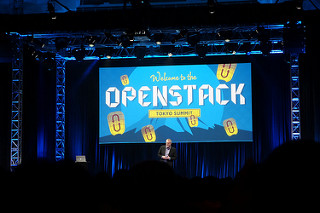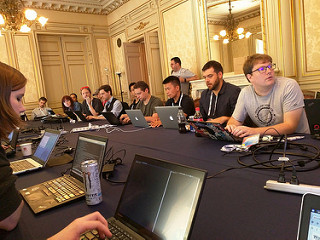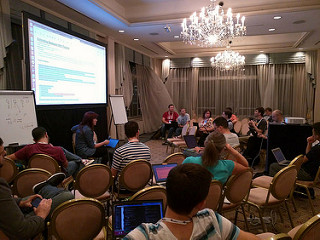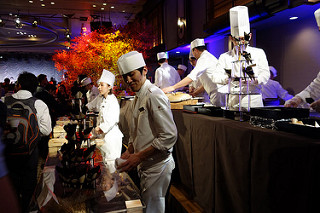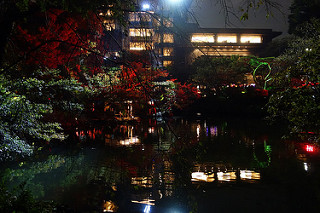The opening keynotes on Wednesday had a pretty common theme: Neutron. Mark Collier shared that in the Liberty cycle, for the first time Neutron was the most active project in OpenStack. This is really inspiring news for the community, as just two years ago there was concern about the commitment to the project and adoption statistics. Mark went on to share that 89% of respondents to the latest OpenStack User Survey said they’re using Neutron in production. Keynotes continued with former Neutron PTL Kyle Mestery who gave a quick history of Neutron, spoke about design goals and new Kuryr project, which focuses on networking for containers. Company-wise, there were keynotes from NTT Resonant, Rackspace, SK Telecom, Rakuten, CyberAgent and IBM about their use of OpenStack. Many of these companies shared basic details of their deployments and stressed the win for their customers both in terms of cost and deployment and feature release time (fast!). Full video of the keynotes here.
Directly after the keynotes we had the OpenStack Infrastructure work sessions on our transition to Masterless Puppet. There are several moving parts to this transition, including changes to how we use hiera, changes to and additions of several scripts and exploring how we handle PuppetDB and PuppetBoard in the Puppet Masterless world. I admit to not being as productive during this session as I would have liked, but I did manage to catch up on the problem space and hope I can help with future improvements. I hope our very public experience in the move away from having a Puppetmaster is valuable to other teams looking to do the same. Read-only link to the etherpad here.
At lunch I was finally able to meet Christian Berendt, who has been very helpful with the technical review of the book I’m working on. He met Matt Fischer and I at one of the many on-site restaurants and we all talked through the current status of the book and the path forward to completion. The book continues to be a challenging project, but it’s always energizing to meet up with the other folks who are spending time on it to brainstorm and push through the difficult parts.
I went to a session about Ironic third party plugin testing after lunch. Mike Perez, former Cinder PTL, shared his experience with requiring testing in the third party space for Cinder and had a lot of valuable feedback. There was mention of the Third Party Team, which has regular meetings, the openstack-ci module to aid in deployment of the CI, discussion of potential milestone deadlines over the next couple of cycles. and speculation as to possible hardware requirements. Read-only etherpad here.
It was then off to a QA session about the new health dashboard to track problems and failures in our CI system so they can be checked by anyone when a disruption occurs. An initial prototype has been launched, so the discussion centered around the future of scaling the dashboard so it can be introduced to the wider community. This included concerns like backups and bottlenecks like subunit2sql performance fixes. I volunteered for fixing up the UI for health dashboard so that it matches the rest of our status.openstack.org pages, and should have that done next week. Read-only link to the Etherpad from the session here.
My final session of the day was on a proposal for Nodepool plugins. The proposal sought to address the needs of testing on bare metal and in containers directly. The consensus from the Infrastructure team tended to be that we really want to use the support for containers and bare metal that is already in, or being developed for, as native in OpenStack solutions. This will still require changes to Nodepool, but the hope is that it won’t require the re-architecture that a plugin system may require.
With that, the day wound down. The official evening party was put on by HP, Scality, Cisco and Bit-isle and took place at the beautiful Happo-En park. It was a shuttle ride or a 10 minute walk from the venue, we went with the latter. The event had several indoor spaces with refreshments (sushi! tempura! beer! sake!) and entertainment like drumming, various types of dance and sumo.
It also had a beautiful outdoor space, with a park to walk through, water features, bridges, and a whole fleet of bonsai trees, one of which was 520 years old. Given my tolerance for crowded parties, having a space where I could escape to and get some fresh air in a quieter space is important for my enjoyment of a party.
I wrapped up the evening chatting with some colleagues in one of the quiet outdoor spaces and managed to get back to the hotel not too late. It was time to get some rest for Thursday!
More photos from the evening here: https://www.flickr.com/photos/pleia2/albums/72157660449966445


